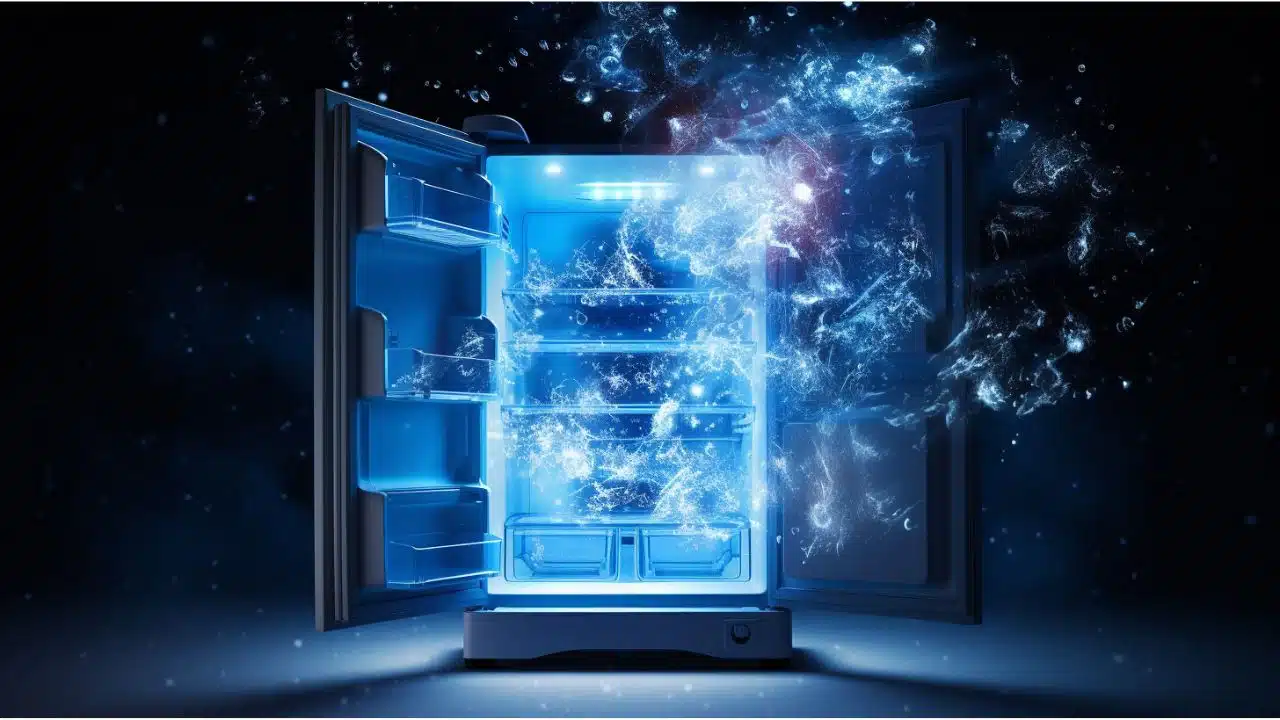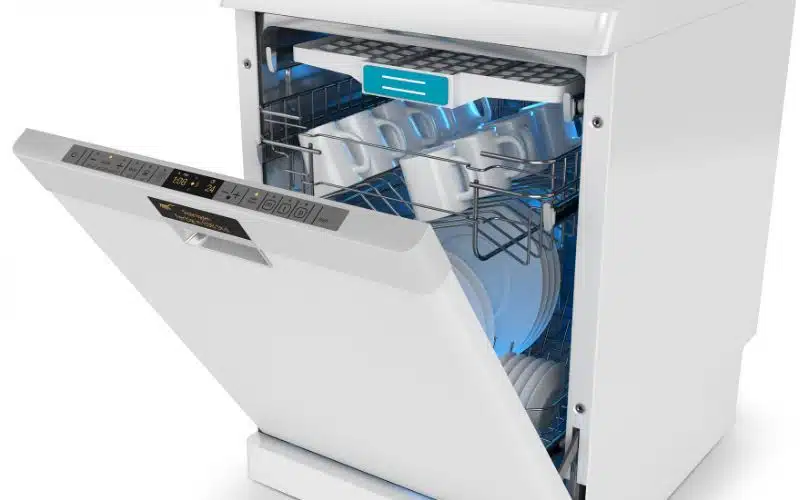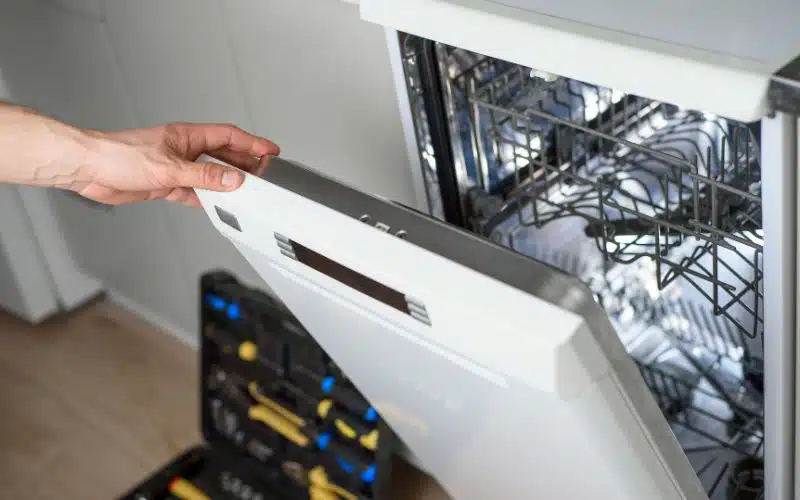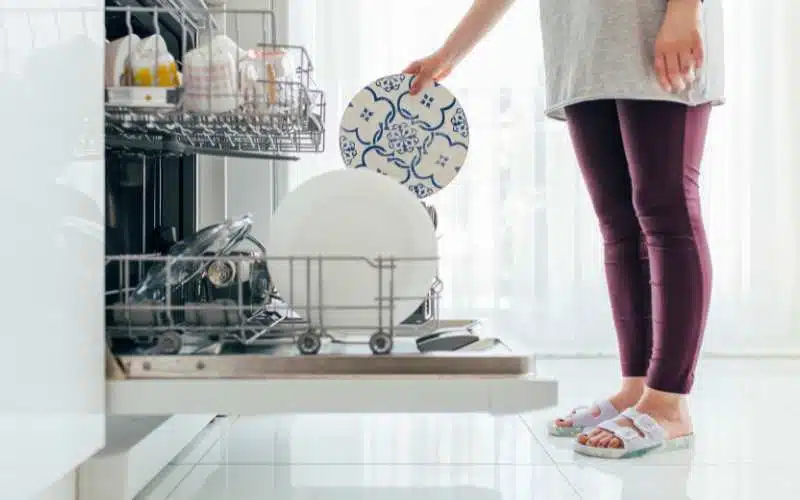Dishwasher and Fridge on the Same Circuit might seem cool, but it’s like having two superheroes sharing one power source. What happens next? Let’s find out how these kitchen buddies handle this and keep your snacks and plates safe!
Key Takeaways
- Dishwashers and Refrigerators Need Dedicated Circuits: To ensure safety and efficiency, both dishwashers and refrigerators should ideally have their own dedicated electrical circuits.
- Safety and Compliance: Dedicated circuits prevent overloading, reduce fire hazards, and comply with National Electrical Code requirements.
- Specifics to Consider: Dishwashers typically require a 120/125-volt circuit with 15-20 amps. Refrigerators often need a 120-volt, 20-amp circuit with AFCI and GFCI protection for additional safety.
- Consult Professionals: Always consult a skilled electrician for proper installation and compliance with the latest electrical standards.
Does A Dishwasher Need To Be On A Dedicated Circuit?
A dishwasher requires a dedicated circuit to operate safely. Having a separate circuit keeps the big electricity use under control. It stops your home’s wires from getting too full.
If the dishwasher shares a circuit with other big power users, it might trip the breaker, especially if they’re all used at the same time.
Dishwasher Circuit Requirements:
- Voltage: Typically 120/125-volt
- Amperage: 15-20 amps
- Wire Type: For 15 amps, use 14/2 NM wire with ground; for 20 amps, use 12/2 NM wire with ground.
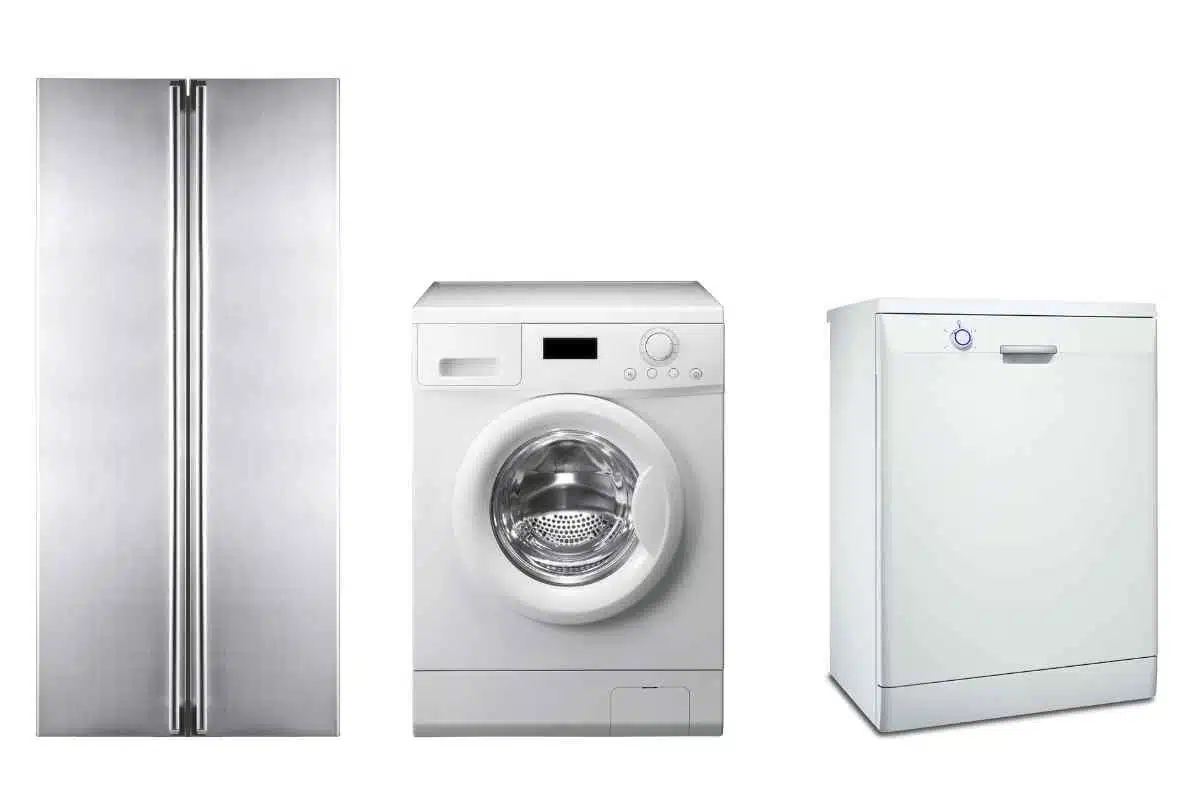
Why A Dedicated Dishwasher Circuit?
- Safety: Prevents overheating of wires and potential fire hazards.
- Stability: Ensures the dishwasher operates without issue even if another appliance circuit fails.
- Code Compliance: Meets NEC code requirements for modern kitchens, which may necessitate additional circuits during remodels.
Dishwashers usually need their own electric circuit. But, if other appliances don’t use a lot of power, some dishwashers can share a circuit. This is okay as long as the total electricity used is safe.
When you add a new dishwasher or update your kitchen, make sure your electricity can support a special circuit just for the dishwasher.
If your kitchen is old, it’s a good idea to update the wiring to meet today’s standards. This helps your dishwasher work its best and keeps you safe from electrical issues.
Always talk to a skilled electrician who knows how to put in the right circuit the right way, following the newest electrical rules.
Even for small changes, getting the right advice and doing it correctly is important to keep your kitchen safe and working well.
Do Refrigerators Need To Be On A Dedicated Circuit?
When considering the electrical setup for your kitchen, one important appliance to focus on is your refrigerator.
Here’s why having it on a dedicated circuit is crucial:
- Initial Power Surge: Refrigerators can draw up to six times their running current when they start up. This can cause a significant surge on a shared circuit.
- Manufacturer’s Guide: Guides often recommend a dedicated circuit to prevent tripping the circuit breaker, especially since a refrigerator is a noncontinuous duty load.
Key Considerations for a Refrigerator Circuit:
- Voltage Requirements: Typically requires 120v for startup.
- Ampere Rating: Recent designs demand a dedicated 20 amp circuit.
- Wiring Specifications: A 12/2 NM wire with a ground is commonly used.
- AFCI Protection: It is crucial to safeguard appliances from electrical fires caused by arcing.
- GFCI Protection: Ensures protection against electrical shocks and is vital for safety.
| Safety Feature | Utility | Requirement for Refrigerators |
|---|---|---|
| AFCI Protection | Detects sparking, prevents fire | Advisable |
| GFCI Protection | Guards against electric shock | Advisable for receptacles |
Remember that while there are no legal mandates to have your refrigerator on a dedicated circuit, compliance with manufacturers’ recommendations is the safest approach.
Also, consider that your fridge functions continuously, thus ensuring a dedicated power supply supports its uninterrupted operation.
Electrical systems are designed to protect you and your appliances. Incorporating both AFCI and GFCI protection are practical step to enhance safety in your kitchen, avoiding the risks of circuit overloading and electrical incidents.
What Appliances Can Be On The Same Circuit?
1. The Appliance’s Power Ratings
To determine if multiple appliances can share a circuit, assess their power ratings.
Power ratings are critical indicators of an appliance’s electricity consumption and are usually found on the appliance or in the user manual.
They include voltage and amperes, which can be multiplied to determine wattage.
Here’s a simple formula:
Wattage (W) = Voltage (V) x Amperes (A)
Use this to calculate an appliance’s power usage:
| Appliance | Voltage (V) | Amperes (A) | Wattage (W) |
|---|---|---|---|
| Microwave | 120 | 5.67 | 680 |
| Kettle | 120 | 12.5 | 1500 |
Remember: Combine appliances with similar power ratings on the same circuit to prevent overloading.
For example, a microwave with a wattage of up to 680 W can be on the same circuit as other small appliances, as long as their combined power consumption doesn’t exceed the circuit’s rating.
2. The Circuit
Your home’s circuits are the infrastructure behind powering appliances. The typical types are lighting circuits and small appliance circuits.
Understanding your circuit’s limitations is key to preventing overloads and ensuring safety.
The parameters that help you determine if multiple appliances can share a circuit include:
- Circuit Amperage Rating: This is the maximum current a circuit can handle. A 20-amp circuit, for example, can handle up to 20 amperes before the circuit breaker trips.
- Electrical Code Compliance: The National Electrical Code specifies guidelines for circuit loads. For kitchens, dedicated circuits are often required for heavy-use appliances to avoid hazards.
- GFCI and AFCI Protection: Circuits in moist areas like kitchens and bathrooms require GFCI protection to prevent electric shock, while AFCI protection is essential to mitigate fire risks from arcing faults in living areas.
- Type of Load: Some appliances have continuous duty loads, meaning they run for extended periods at the same power level, while others have noncontinuous duty loads, with intermittent use. Continuous-use appliances like ovens should ideally be on separate circuits to avoid tripping.
By integrating these considerations, you ensure that your appliances are safely sharing circuits without the risk of overloading.
Always keep in mind the amperage and the code requirements for the safest and most efficient use of your home’s electrical system.
Conclusion
You may encounter nuisance tripping if you have your dishwasher and refrigerator on the same circuit due to overlapping current demands.
It’s essential to ensure that circuits can handle the appliances connected to them. Consult an electrician for advice on circuit management to avoid any electrical issues.
